The Joy Factor: Mood-Elevating Home Decor
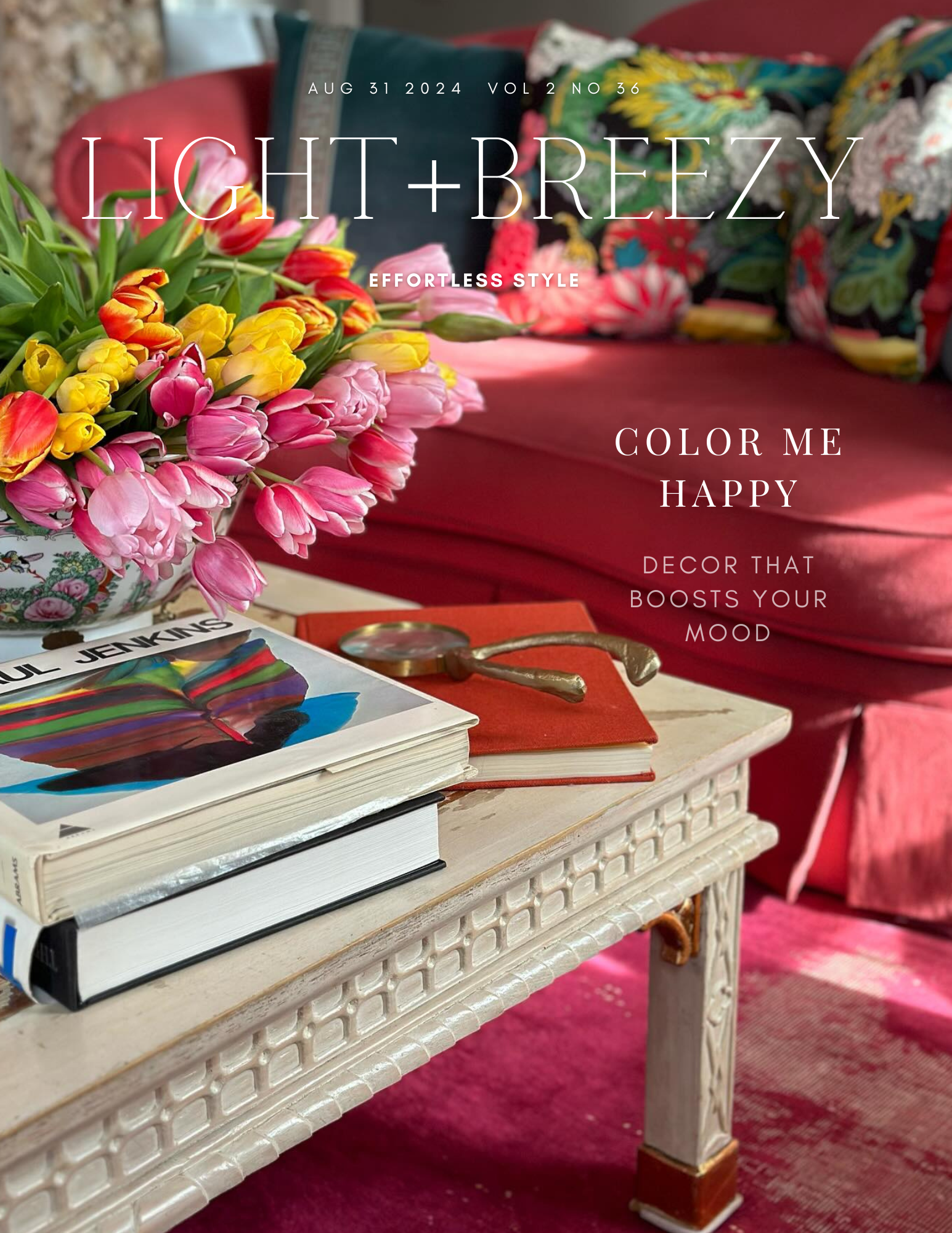
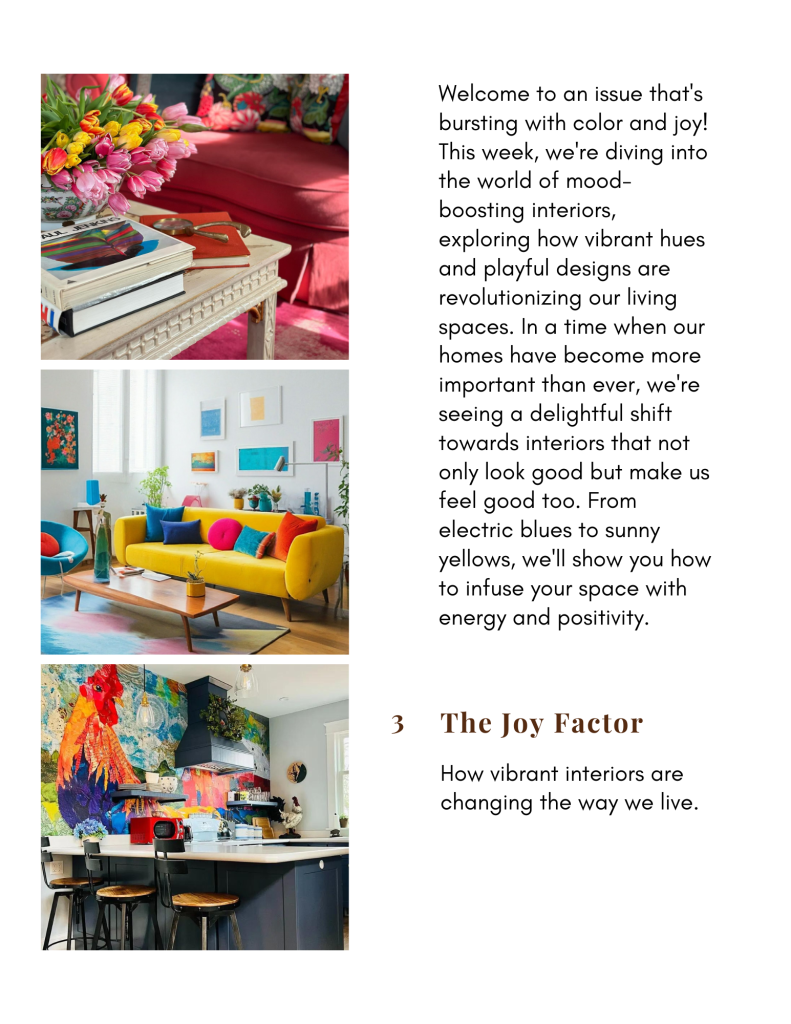
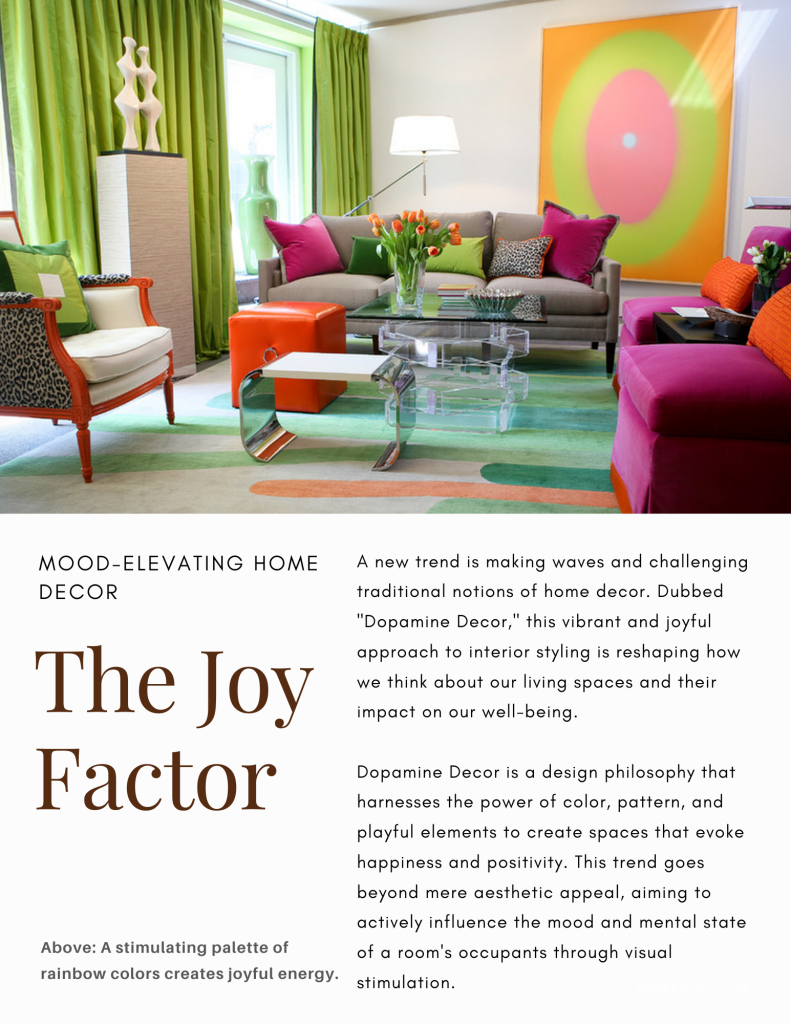
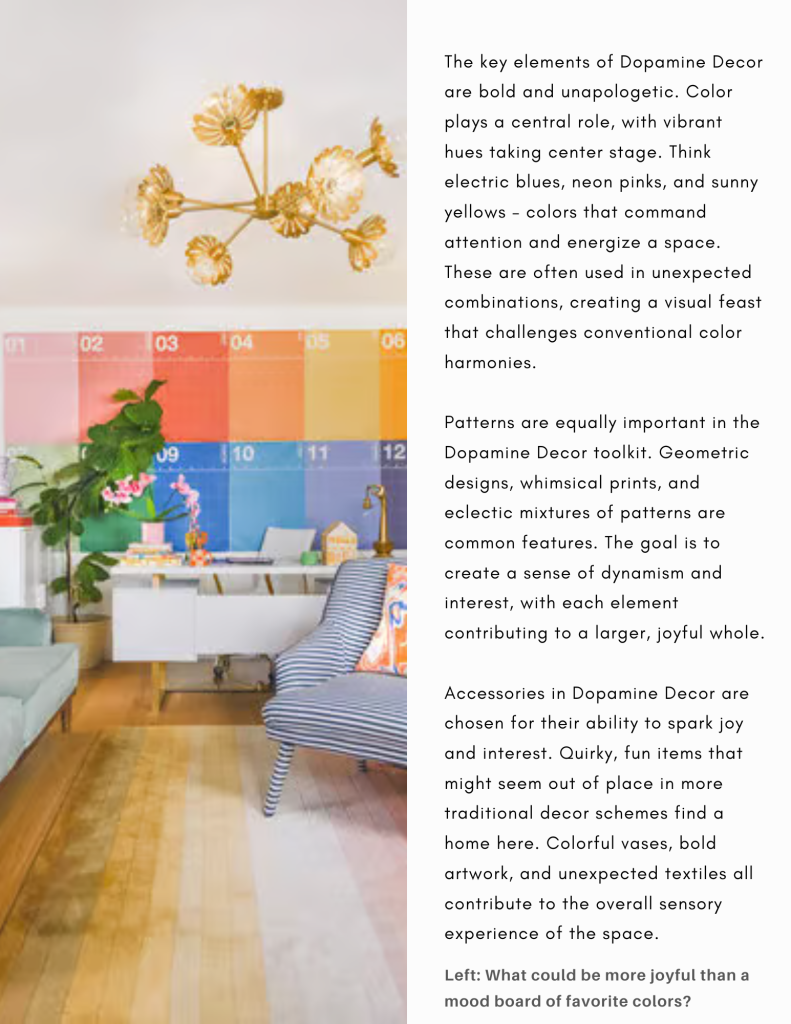
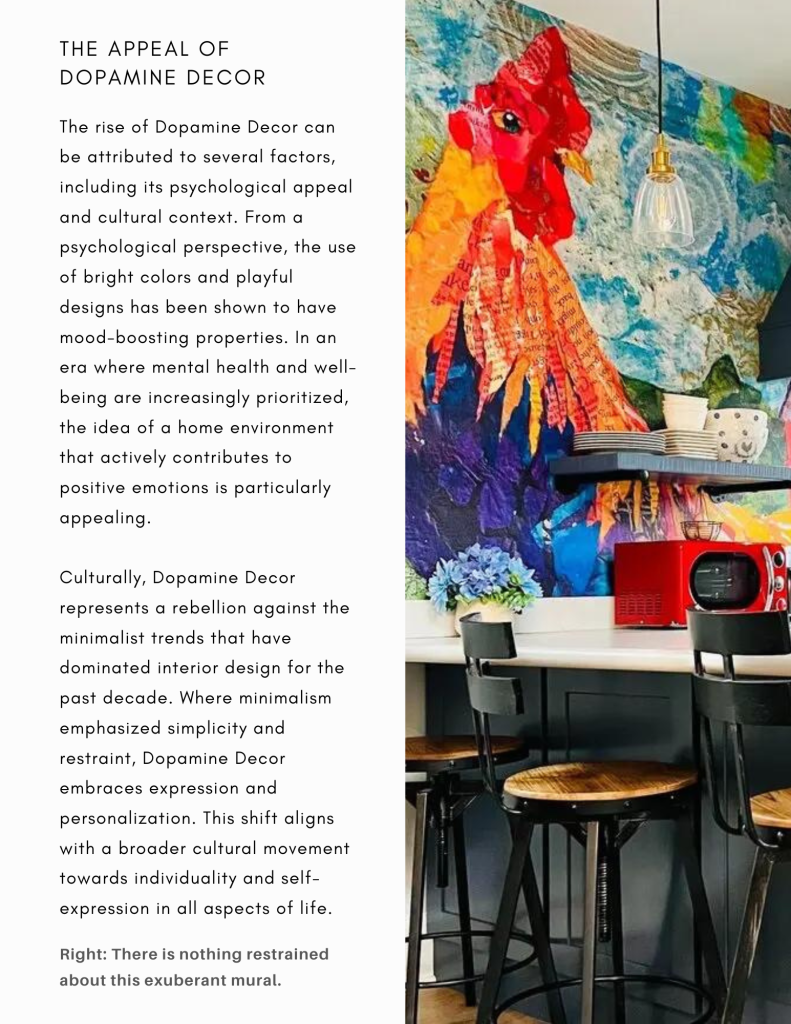
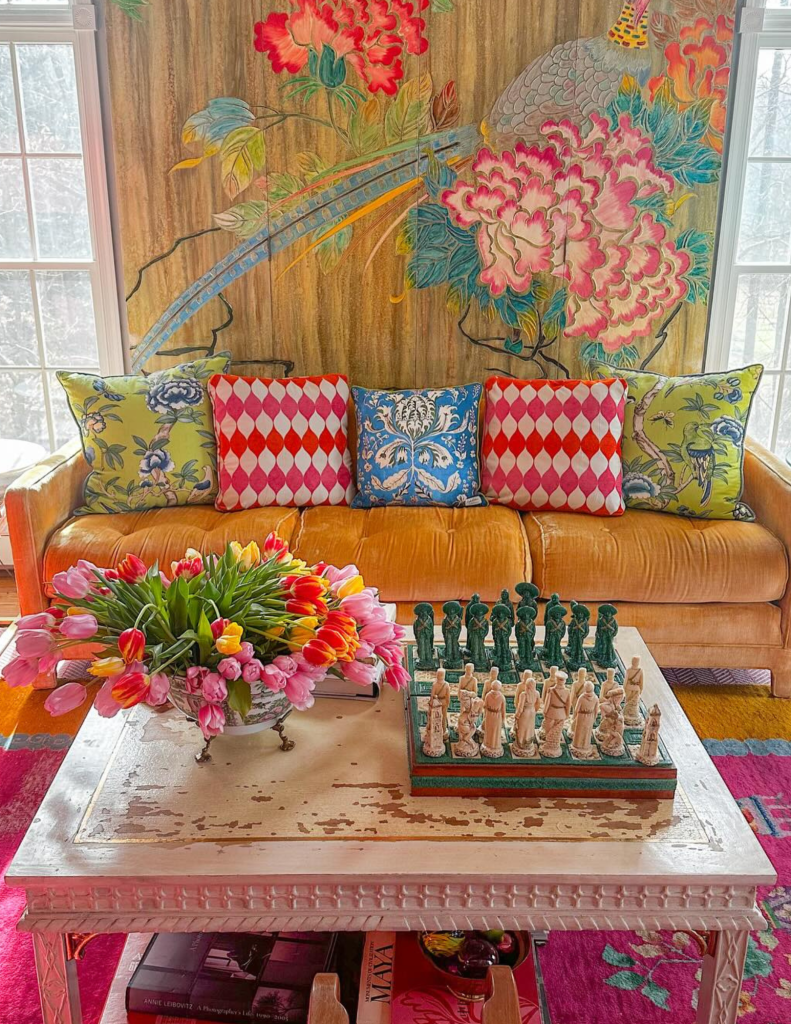
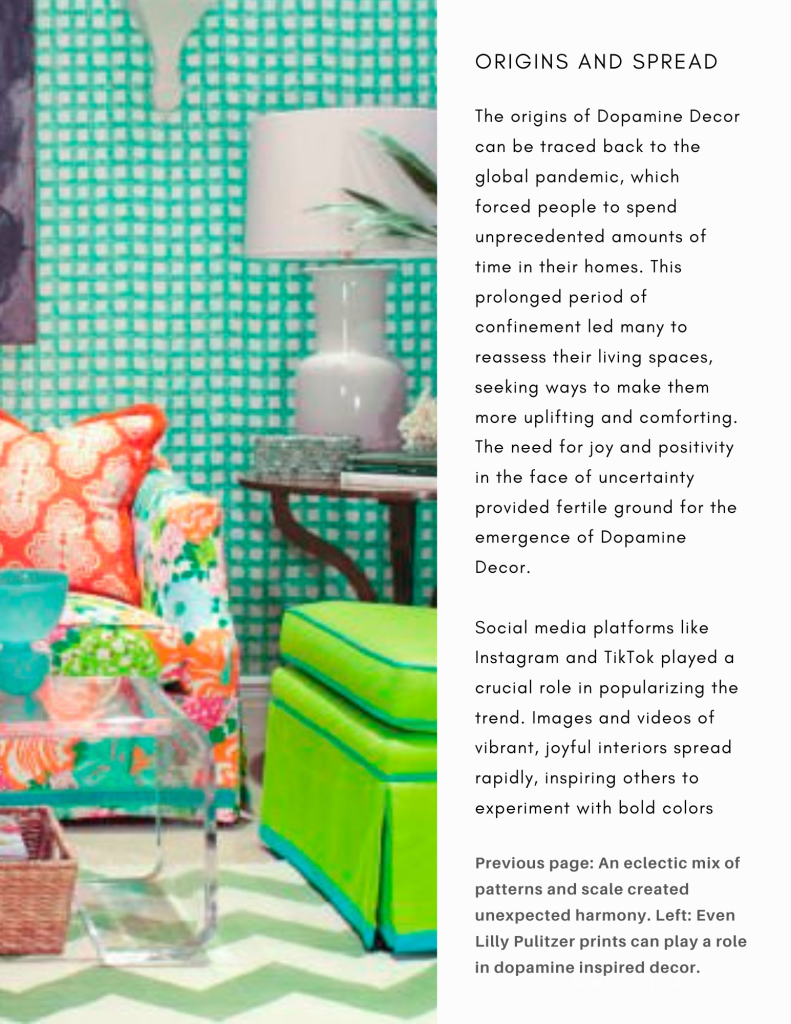
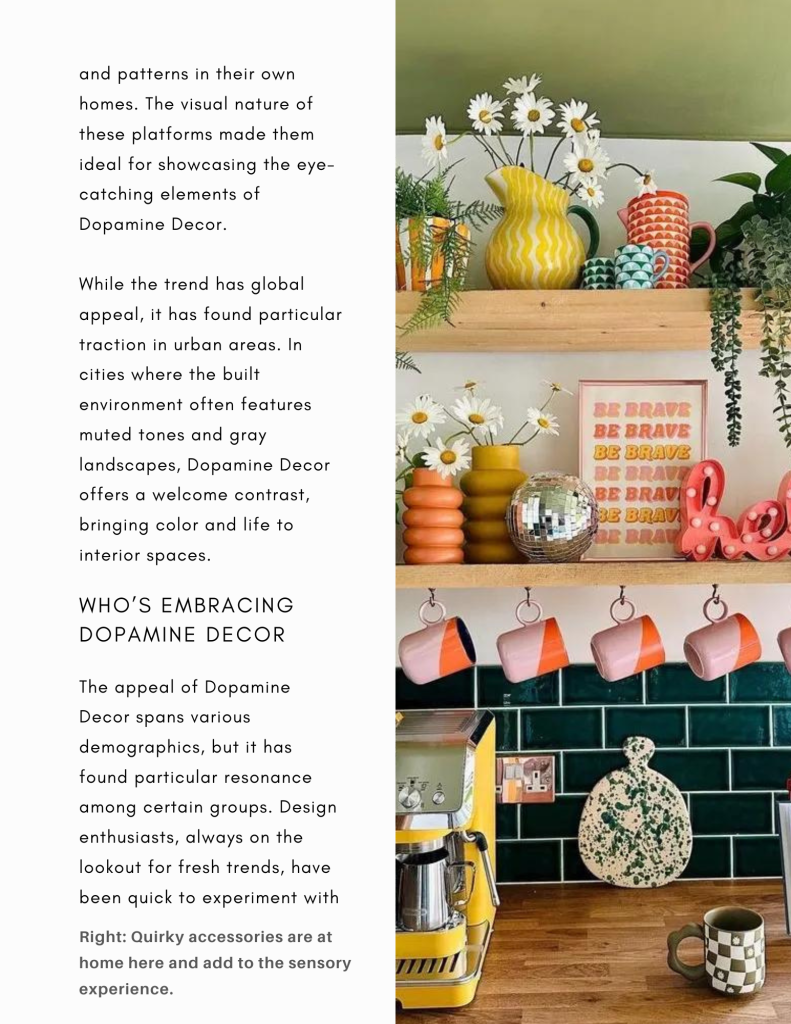
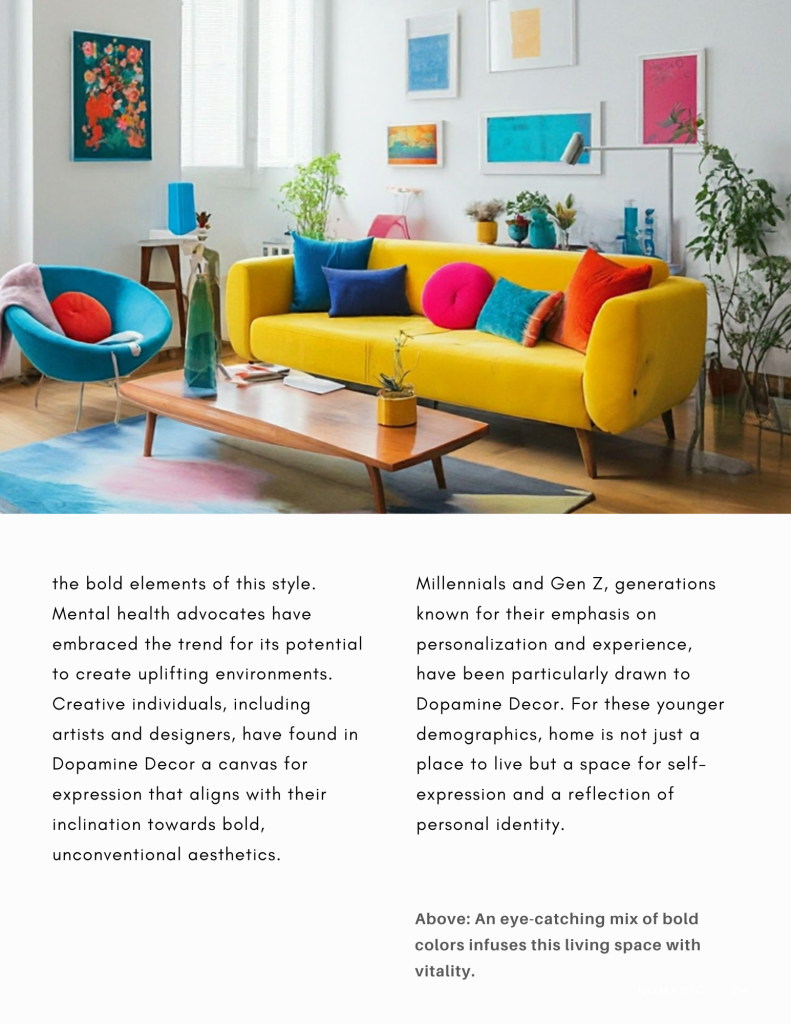
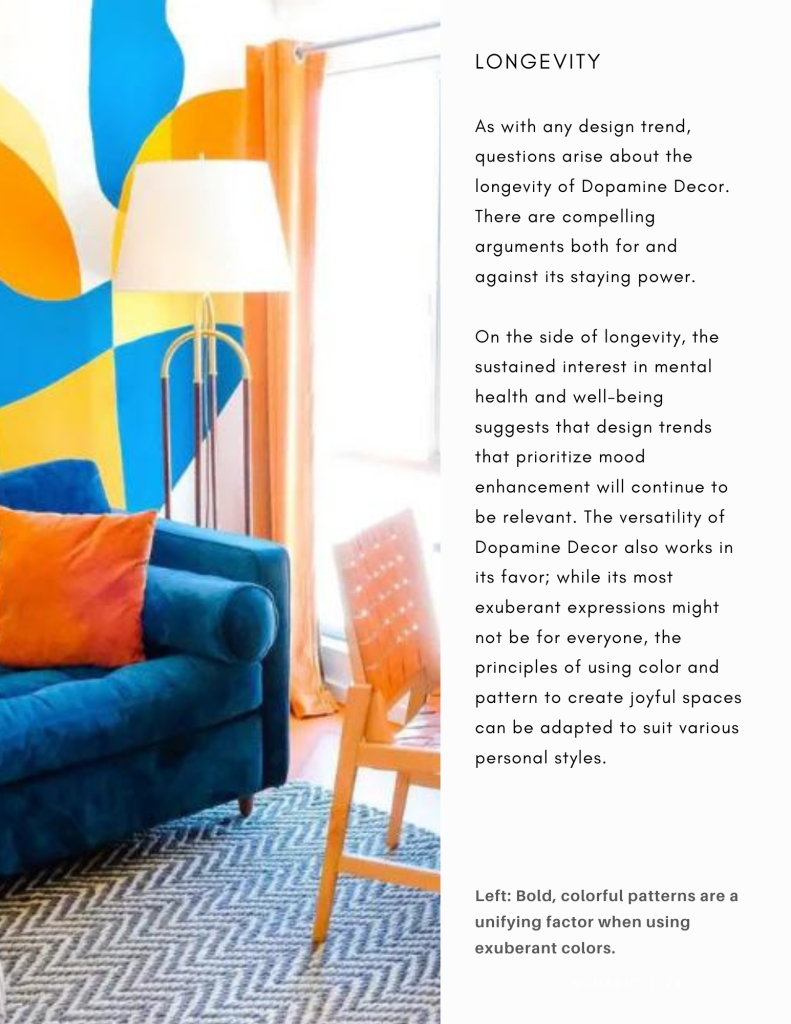
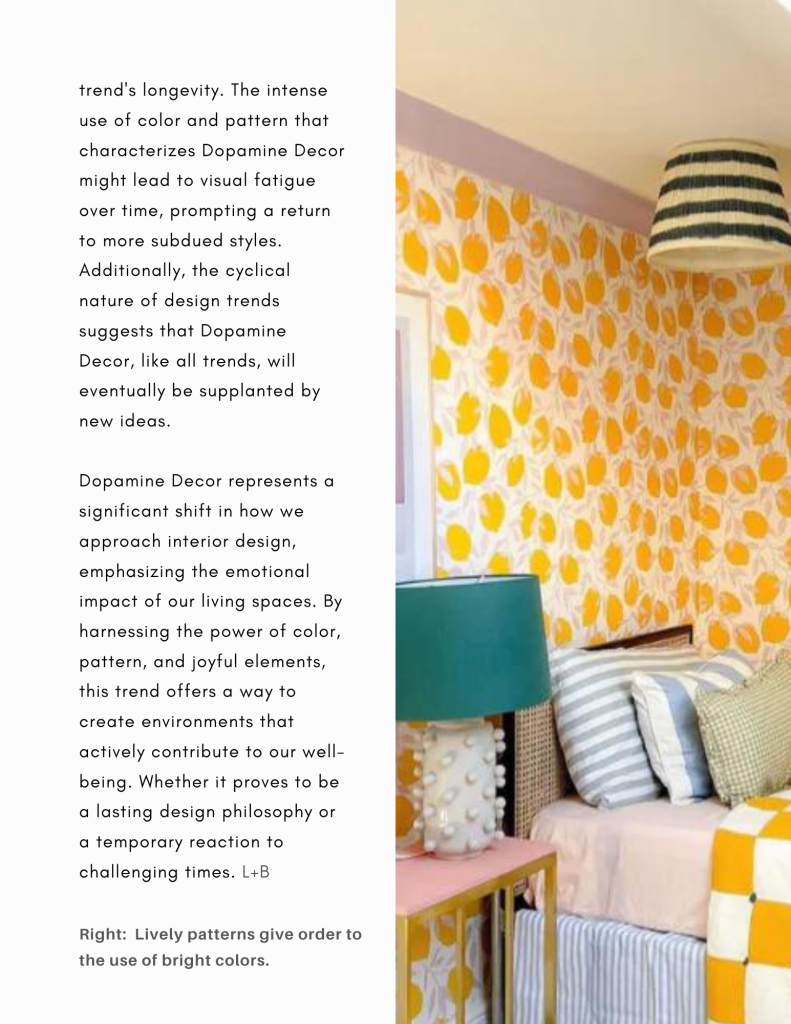
Complete Article Text:
The Joy Factor: Mood-Elevating Home Decor
A new trend is making waves and challenging traditional notions of home decor. Dubbed “Dopamine Decor,” this vibrant and joyful approach to interior styling is reshaping how we think about our living spaces and their impact on our well-being.
Dopamine Decor is a design philosophy that harnesses the power of color, pattern, and playful elements to create spaces that evoke happiness and positivity. This trend goes beyond mere aesthetic appeal, aiming to actively influence the mood and mental state of a room’s occupants through visual stimulation.
The key elements of Dopamine Decor are bold and unapologetic. Color plays a central role, with vibrant hues taking center stage. Think electric blues, neon pinks, and sunny yellows – colors that command attention and energize a space. These are often used in unexpected combinations, creating a visual feast that challenges conventional color harmonies.
Patterns are equally important in the Dopamine Decor toolkit. Geometric designs, whimsical prints, and eclectic mixtures of patterns are common features. The goal is to create a sense of dynamism and interest, with each element contributing to a larger, joyful whole.
Accessories in Dopamine Decor are chosen for their ability to spark joy and interest. Quirky, fun items that might seem out of place in more traditional decor schemes find a home here. Colorful vases, bold artwork, and unexpected textiles all contribute to the overall sensory experience of the space.
The Appeal of Dopamine Decor
The rise of Dopamine Decor can be attributed to several factors, including its psychological appeal and cultural context. From a psychological perspective, the use of bright colors and playful designs has been shown to have mood-boosting properties. In an era where mental health and well-being are increasingly prioritized, the idea of a home environment that actively contributes to positive emotions is particularly appealing.
Culturally, Dopamine Decor represents a rebellion against the minimalist trends that have dominated interior design for the past decade. Where minimalism emphasized simplicity and restraint, Dopamine Decor embraces expression and personalization. This shift aligns with a broader cultural movement towards individuality and self-expression in all aspects of life.
Origins and Spread
The origins of Dopamine Decor can be traced back to the global pandemic, which forced people to spend unprecedented amounts of time in their homes. This prolonged period of confinement led many to reassess their living spaces, seeking ways to make them more uplifting and comforting. The need for joy and positivity in the face of uncertainty provided fertile ground for the emergence of Dopamine Decor.
Social media platforms like Instagram and TikTok played a crucial role in popularizing the trend. Images and videos of vibrant, joyful interiors spread rapidly, inspiring others to experiment with bold colors and patterns in their own homes. The visual nature of these platforms made them ideal for showcasing the eye-catching elements of Dopamine Decor.
While the trend has global appeal, it has found particular traction in urban areas. In cities where the built environment often features muted tones and gray landscapes, Dopamine Decor offers a welcome contrast, bringing color and life to interior spaces.
Who’s Embracing Dopamine Decor?
The appeal of Dopamine Decor spans various demographics, but it has found particular resonance among certain groups. Design enthusiasts, always on the lookout for fresh trends, have been quick to experiment with the bold elements of this style. Mental health advocates have embraced the trend for its potential to create uplifting environments. Creative individuals, including artists and designers, have found in Dopamine Decor a canvas for expression that aligns with their inclination towards bold, unconventional aesthetics.
Millennials and Gen Z, generations known for their emphasis on personalization and experience, have been particularly drawn to Dopamine Decor. For these younger demographics, home is not just a place to live but a space for self-expression and a reflection of personal identity.
Longevity
As with any design trend, questions arise about the longevity of Dopamine Decor. There are compelling arguments both for and against its staying power.
On the side of longevity, the sustained interest in mental health and well-being suggests that design trends that prioritize mood enhancement will continue to be relevant. The versatility of Dopamine Decor also works in its favor; while its most exuberant expressions might not be for everyone, the principles of using color and pattern to create joyful spaces can be adapted to suit various personal styles.
However, there are also factors that could limit the trend’s longevity. The intense use of color and pattern that characterizes Dopamine Decor might lead to visual fatigue over time, prompting a return to more subdued styles. Additionally, the cyclical nature of design trends suggests that Dopamine Decor, like all trends, will eventually be supplanted by new ideas.
Dopamine Decor represents a significant shift in how we approach interior design, emphasizing the emotional impact of our living spaces. By harnessing the power of color, pattern, and joyful elements, this trend offers a way to create environments that actively contribute to our well-being. Whether it proves to be a lasting design philosophy or a temporary reaction to challenging times, Dopamine Decor has already left its mark on the world of interior design, encouraging us all to think more deeply about the relationship between our spaces and our emotions.
